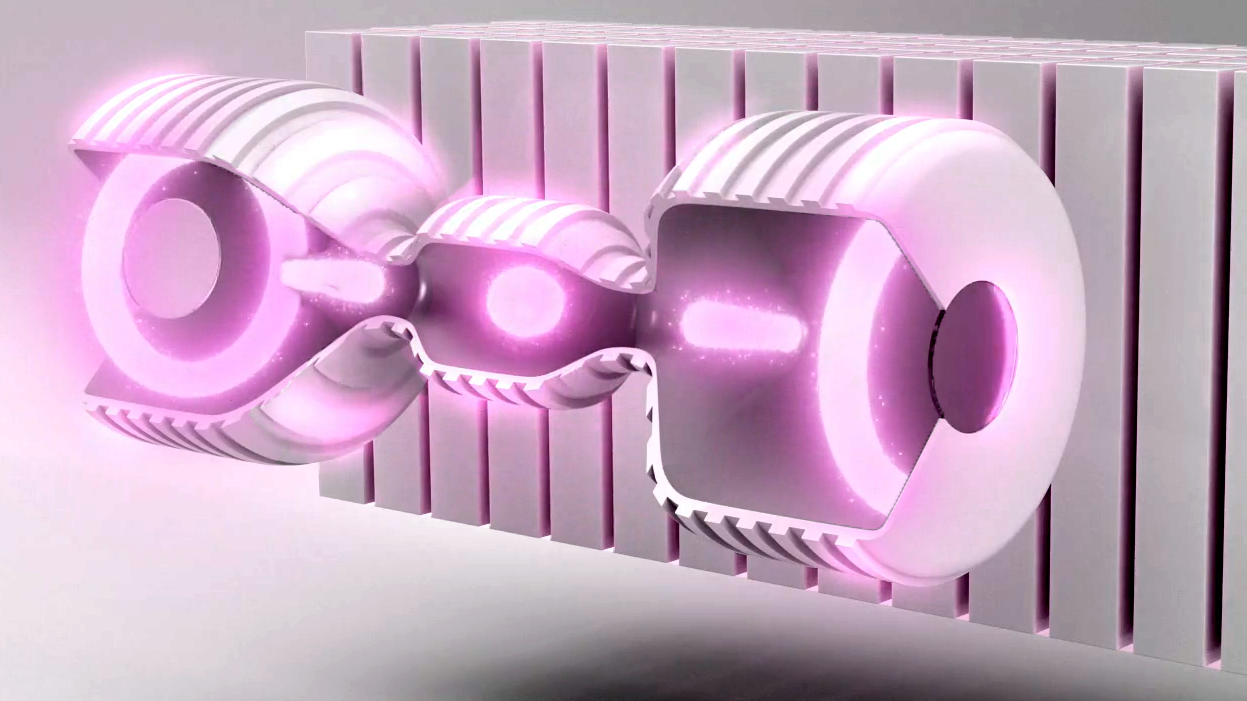Helion, the future of nuclear fusion?
Several startups and research projects are trying to make nuclear fusion a reality. One of the most remarkable and clever is Helion.
Contents
Nuclear fusion: abundant energy, always forty years in the future
A well-known joke among physicists is that nuclear fusion is always 40 years in the future. Indeed, in the 1950s, after the explosion of the first hydrogen bomb, we were already promised clean nuclear fusion. Unfortunately, that took a while. But at the end of 2022, the first controlled nuclear fusion reaction finally took place, which produced more energy than was put in.
The method for this is not really practical. An entire football field full of heavy laser devices was needed to compress the ball of fusion material so that nuclear fusion took place.
Also difficult tokamak
The popular tokamak is also a nightmare in terms of design. A plasma is contained in a tokamak, a kind of doughnut. That is matter that is so hot that atoms disintegrate into electrons and atomic nuclei, hundreds of millions of degrees hot. The walls of the reactor must be cooled at the same time and the plasma must be kept at the right temperature. This requires extremely strong magnetic fields, i.e. superconductors with a temperature just above absolute zero. That at a few decimeters from the extremely hot plasma.
Nuclear fusion power plants of the future will probably work in a completely different way. A good candidate for this is the Helion design.
Helion, direct energy from charged particles
The principle behind Helion is as simple as it is genius. The nuclear fusion ‘fuel’ consists of clouds of charged particles. When these particles collide at the right speed, they fuse and fusion energy is released.
This energy is released in the form of the kinetic energy of the plasma particles, in other words: heat. So the plasma is going to expand.
And the moving electrically charged particles of the plasma generate current in a neighboring conductor, which you can tap directly. So you no longer need a steam turbine, but you can send the electricity directly to the power grid. This process forms a cycle, as a result of which a kind of alternating current is formed. So much for the theory.
But does Helion’s system work?
The history of nuclear fusion is littered with the most brilliant ideas, which have come to nothing. However imperfect, the tokamak and the laser array are the only two designs that came close to the point where you get more energy out of the fusion than you put into it.
Still, this time there are good reasons to take Helion seriously. The first is that Helion’s investors have pumped in more than $1.5 billion more on the advice of leading nuclear physicists. Apparently, Helion was able to show results so impressive that billionaires like Peter Thiel, OpenAI (and thus ChatGPT) CEO Sam Altman and Facebook co-founder Dustin Moskovitz want to invest hundreds of millions in it.
Multiple milestones achieved
Their funding is linked to the achievement of milestones. At the moment, Helion has already succeeded in generating a plasma of more than 100 million degrees and fusing it. The previous smaller reactor was already close to the break-even point. The larger the reactor, the more efficient. So it is expected that today’s reactor, the Trento, will reach break-even, the point where more energy comes out than goes in. The next reactor, Polaris, will then convert that energy into electricity. Will there ever be a working prototype? Then this can be produced in series.
Each reactor is estimated to generate 50 megawatts. That’s enough for 30,000 American households. Because the reactors are so small, they can easily be scaled and placed in strategic places where there is a shortage of power.
“Power for around 1 cent per kilowatt hour”
Hopefully Helion’s expectations come true. They themselves estimate that it will be possible to produce electricity for around 1 cent per kilowatt hour. Then a new era would really begin. If you have enough energy, you can make anything you want. There will be delays though. As is tradition in the fusion world.



